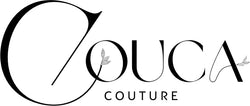In the beginning, there were corsets. Long before the fashion industry was even a glimmer in anyone's eye, people were using corsets to shape their bodies and enhance their figures. The history of corsetry is a fascinating one, filled with stories of innovation, cultural change, and the ever-evolving relationship between fashion and the human body.
Corsets have been around for thousands of years, with the first recorded instances dating back to ancient Mesopotamia. In those days, corsets were made of leather or linen and were used to support the back and protect the rib cage. Over time, corsets became more elaborate and were used to shape the body into the desired silhouette. In the 16th and 17th centuries, corsets became fashionable among the aristocracy, and were often made of silk or satin and decorated with lace and other embellishments.
As the centuries passed, corsets continued to evolve and change. In the 18th century, the corset became an essential part of a woman's wardrobe, with tight-lacing and other extreme shaping techniques becoming popular. In the 19th century, corsets were used to achieve the hourglass figure that was fashionable at the time. And in the 20th century, corsets were still worn, but they were often more comfortable and less restrictive than in previous eras.
So why are corsets making a comeback in the modern world? There are a few reasons. For one thing, corsets are becoming more comfortable and easier to wear than in the past. With the development of new materials and technologies, corsets are now made of flexible, breathable fabrics that are much more comfortable than the stiff, restrictive corsets of the past. In addition, many people are rediscovering the beauty and elegance of corsets and are incorporating them into their wardrobes as a way to add a touch of vintage glamour to their outfits.
But perhaps the biggest reason for the resurgence of corsets is the rise of the body positivity movement. In recent years, more and more people have been rejecting the idea that there is only one "ideal" body shape and have been embracing their bodies just as they are. This has led to a renewed interest in corsets as a way to celebrate the body and enhance its natural shape, rather than trying to force it into an unnatural form.
Overall, the history of corsetry is a long and fascinating one, and it's clear that corsets are here to stay. Whether you're looking to add a touch of vintage glamour to your wardrobe, celebrate your body, or simply enjoy the comfort and support of a well-made corset, there's never been a better time to embrace this timeless fashion staple.

